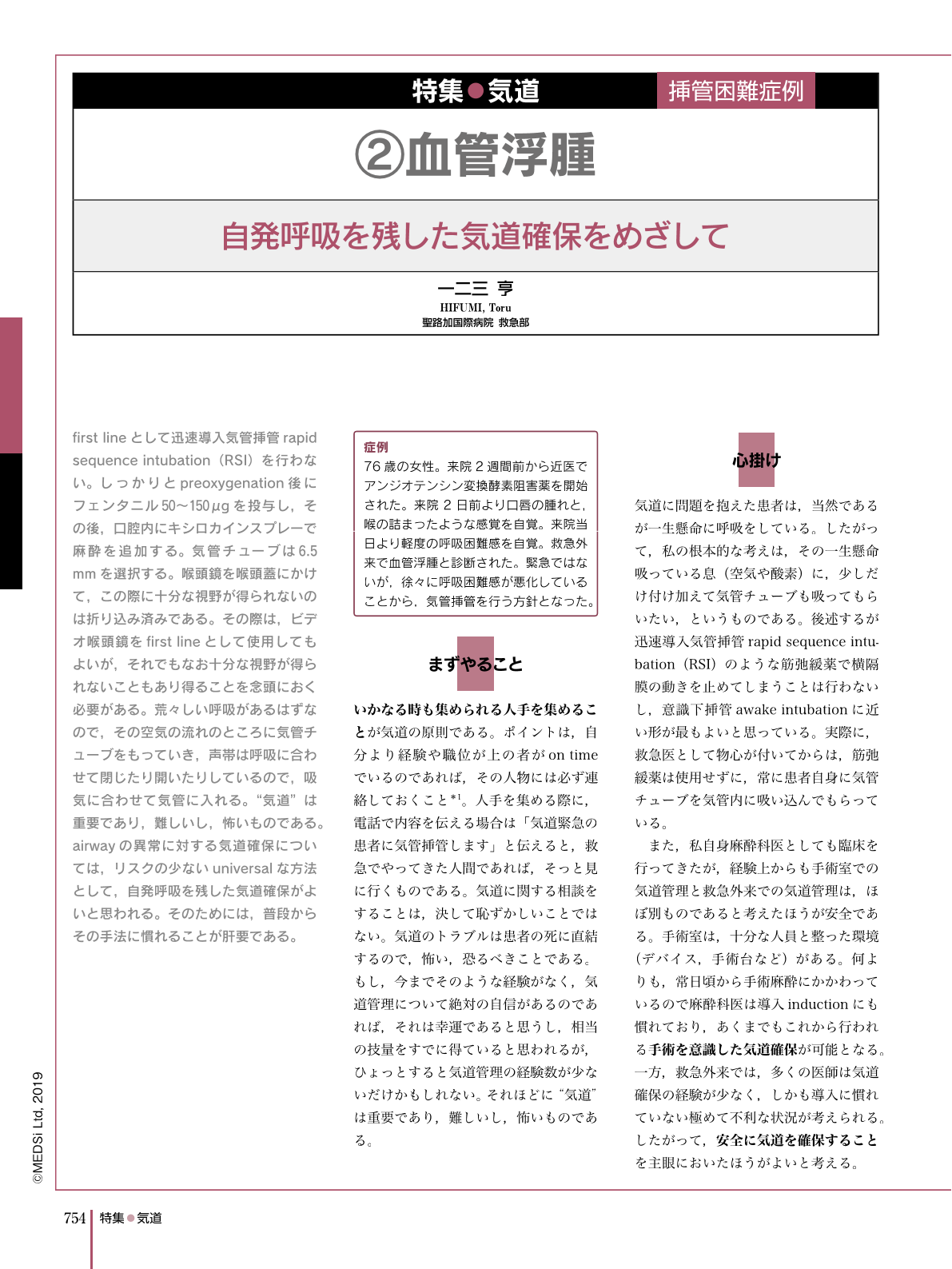Japanese
English
- 有料閲覧
- Abstract 文献概要
- 1ページ目 Look Inside
- 参考文献 Reference
first lineとして迅速導入気管挿管rapid sequence intubation(RSI)を行わない。しっかりとpreoxygenation後にフェンタニル50〜150μgを投与し,その後,口腔内にキシロカインスプレーで麻酔を追加する。気管チューブは6.5mmを選択する。喉頭鏡を喉頭蓋にかけて,この際に十分な視野が得られないのは折り込み済みである。その際は,ビデオ喉頭鏡をfirst lineとして使用してもよいが,それでもなお十分な視野が得られないこともあり得ることを念頭におく必要がある。荒々しい呼吸があるはずなので,その空気の流れのところに気管チューブをもっていき,声帯は呼吸に合わせて閉じたり開いたりしているので,吸気に合わせて気管に入れる。“気道”は重要であり,難しいし,怖いものである。airwayの異常に対する気道確保については,リスクの少ないuniversalな方法として,自発呼吸を残した気道確保がよいと思われる。そのためには,普段からその手法に慣れることが肝要である。
Rapid sequence intubation is not performed as first line airway management. After adequate preoxygenation, 100-150μg of fentanyl should first be administered. Xylocaine spray may be added. A 6.5mm endotracheal tube is used in this situation. Inadequate visualization of the entrance to the trachea is commonly experienced, and the endotracheal tube should be inserted during inhalation. “Securing the airway” is important, difficult and sometimes frightening for emergency physicians. This method of awake induction is considered to be reasonable and somewhat lower risk for patients with an airway emergency. Emergency physicians should be accustomed to the technique of awake induction.

Copyright © 2019, MEDICAL SCIENCES INTERNATIONAL, LTD. All rights reserved.


